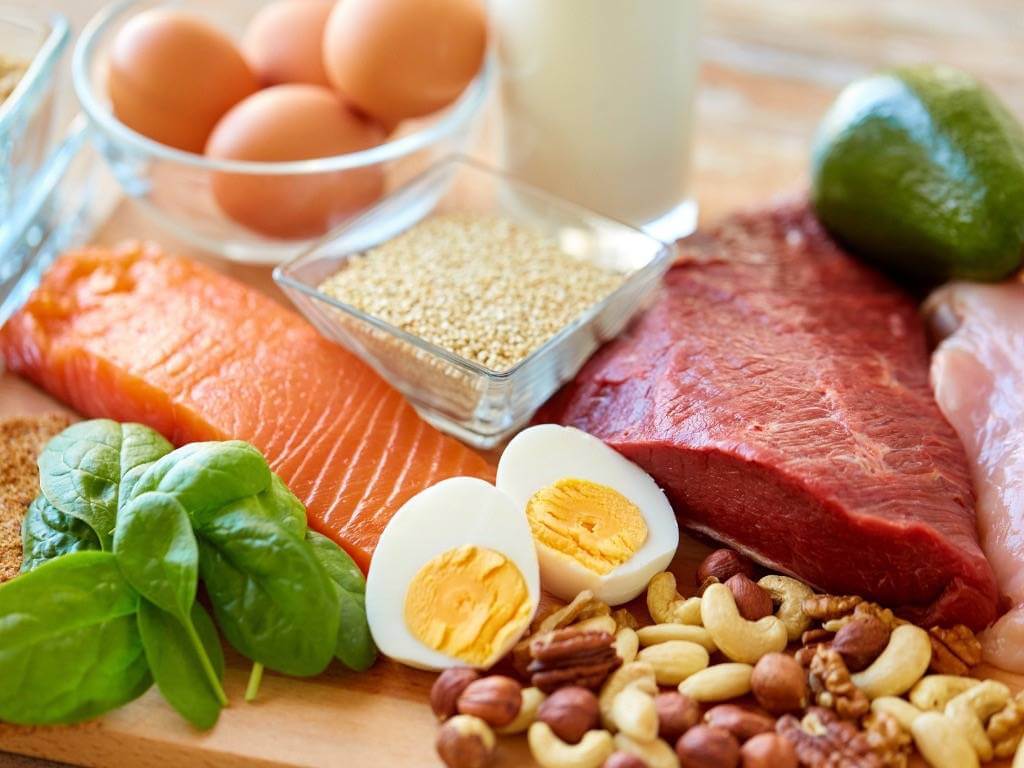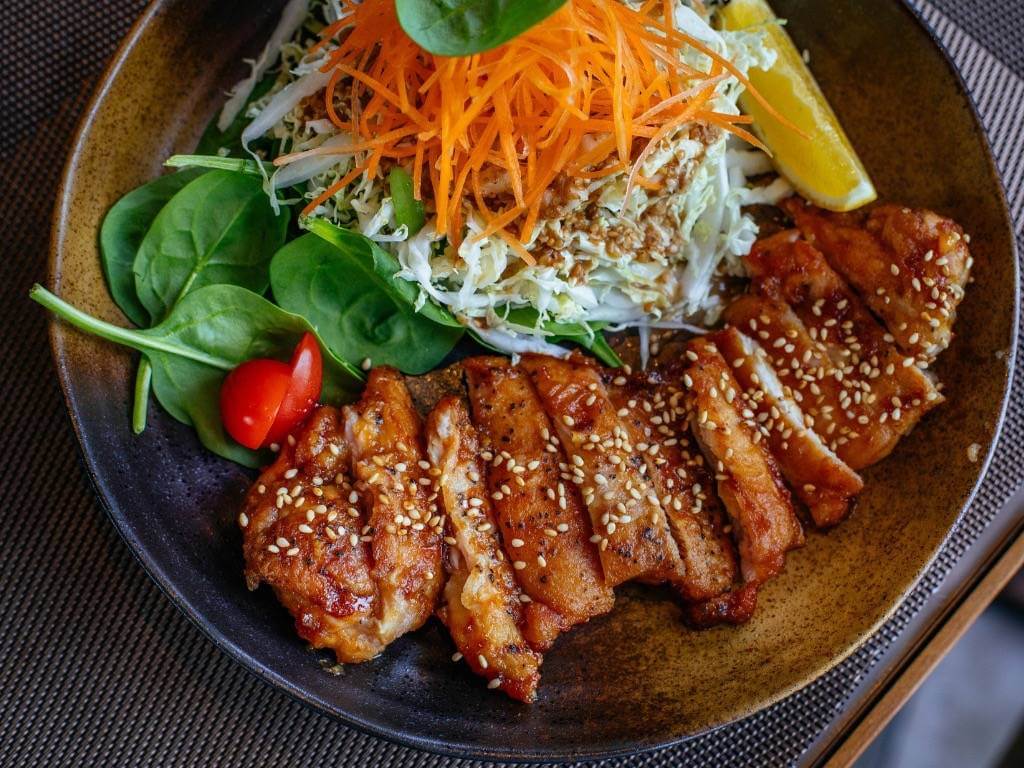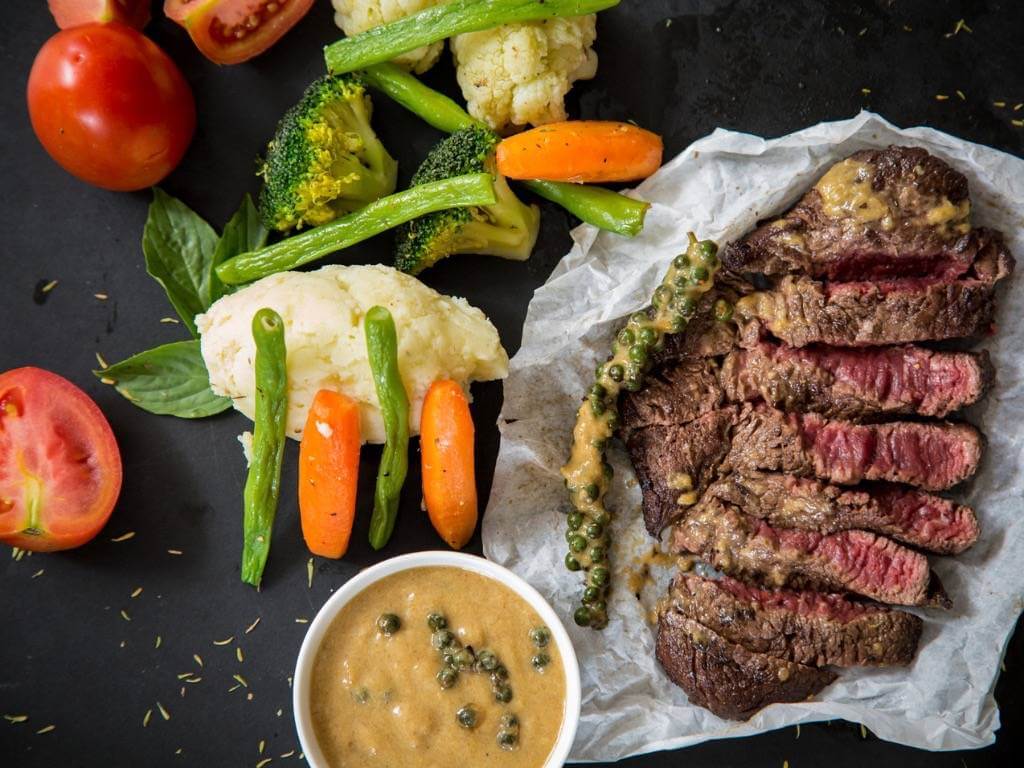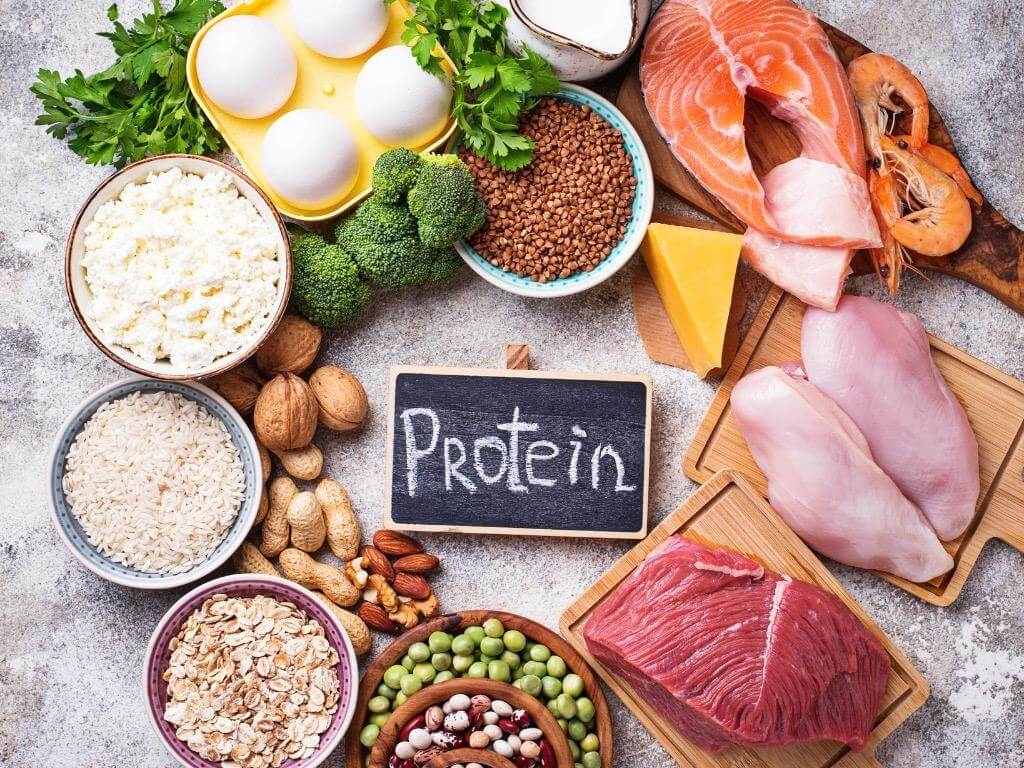Struggling to hit your daily protein goals? You’re not alone. Many people want to eat healthier, build muscle, or lose weight — but don’t know where to start.
Thankfully, getting 30g of protein daily is easier than you think — when you know the right high protein foods to add to your meals.
In this guide, we’ll show you the simplest ways to boost your protein intake with everyday foods, whether you’re following a high protein diet plan, meal prepping, or just trying to stay full longer.
Let’s dive into the best protein-packed foods and how to effortlessly hit that 30g target each day.

By making a few easy changes to your daily routine, you can hit your protein targets. It’s all about knowing which foods are high in protein and how to add them to your meals.
Key Takeaways
- Eat lean meats like chicken and turkey.
- Incorporate fish and seafood into your meals.
- Use plant-based proteins like beans and lentils.
- Include dairy products and eggs in your diet.
- Plan your meals in advance to ensure you’re meeting your protein goals.
Why Your Body Needs Protein Daily
Your body needs protein every day for many important tasks. It helps build and fix tissues, makes enzymes and hormones, and supports your health.
Essential Functions of Protein in the Body
Protein is key for many body functions. It builds and fixes muscles, organs, and tissues. It also makes enzymes, hormones, and other important molecules for health. Eating high protein foods for muscle gain helps grow muscle.
Recommended Daily Protein Intake
The amount of protein you need daily depends on your age, sex, weight, and how active you are. Sedentary adults should get 0.8 grams of protein per kilogram of body weight each day. But athletes or those trying to lose weight might need more. For example, high protein foods for weight loss can help you feel full and boost your metabolism.
Signs of Protein Deficiency
Not getting enough protein can cause health problems. You might feel weak, tired, and swollen. In serious cases, it can lead to hair loss, slow healing of wounds, and a weak immune system. It’s important to eat enough protein to avoid these issues.
| Protein Source | Protein Content per Serving | Recommended Daily Intake |
|---|---|---|
| Chicken Breast | 31g per 3 oz serving | 0.8g/kg body weight |
| Lean Beef | 22g per 3 oz serving | |
| Lentils | 18g per 1 cup cooked |

The Science Behind the 30g Protein Goal
Have you wondered why 30g of protein per meal is recommended? This amount is key because of how our bodies use protein.
Optimal Protein Distribution Throughout the Day
Spreading out protein intake helps keep muscles healthy and supports the body. Eating high protein meals at set times keeps a positive nitrogen balance. This is important for fixing and growing muscles.

Benefits of Consuming 30g Protein per Meal
Eating 30g of protein per meal boosts fullness, aids in weight control, and helps build muscle. Adding best high protein foods to your diet helps meet your daily protein needs.
How Protein Supports Muscle Protein Synthesis
Muscle protein synthesis (MPS) is crucial for muscle repair and growth. Enough protein, especially after working out, boosts MPS. Studies show 30g of protein per meal is enough to maximize MPS, making it essential for athletes.
Complete List of High Protein Foods
There are many high protein foods for everyone, whether you eat meat or not. Adding these foods to your meals can be tasty and easy.
Animal-Based Protein Sources
Animal proteins are full of essential amino acids. They are considered complete proteins. Here are some examples:
- Lean meats like chicken and turkey
- Fish and seafood such as salmon and shrimp
- Dairy products like Greek yogurt and cottage cheese
- Eggs
Plant-Based Protein Sources
Vegetarians and vegans need plant-based proteins. You can mix different sources to get all amino acids. Here are some high protein plant-based foods:
- Legumes like lentils, chickpeas, and black beans
- Nuts and seeds such as almonds, chia seeds, and hemp seeds
- Whole grains like quinoa and farro
- Soy products like tofu and tempeh
Protein Content Comparison Chart
Here’s a look at the protein in some common foods:
| Food | Protein Content per Serving |
|---|---|
| Chicken breast | 31g per 3 oz serving |
| Lentils | 18g per 1 cup cooked |
| Greek yogurt | 20g per 1 cup |
| Quinoa | 8g per 1 cup cooked |
Complete vs. Incomplete Proteins
Complete proteins have all essential amino acids. Animal products are usually complete. But, many plant-based foods are not. Still, eating a variety of plants can give you all amino acids.
Tips for maximizing protein intake: Mix different protein sources. Pair whole grains with legumes or nuts with seeds. This way, you get all amino acids.
Top 10 Best High Protein Foods for Maximum Nutrition
Starting your day with the right foods is key. Foods high in protein are especially good for your health. We’ll look at the top 10 high protein foods, including lean meats, fish, dairy, and plant-based options.
Lean Meats and Poultry
Lean meats and poultry are great for protein. Chicken breast has about 31 grams of protein per 3-ounce serving. Turkey breast offers around 24 grams of protein per 3-ounce serving.
Fish and Seafood
Fish and seafood are not just high in protein but also in omega-3s. Salmon stands out with about 20 grams of protein per 3-ounce serving. Shrimp provides around 19 grams of protein per 3-ounce serving.
Dairy Products
Dairy products are full of protein and versatile. Greek yogurt is a top choice, with about 20 grams of protein per cup. Cottage cheese offers about 28 grams of protein per cup.
Plant Powerhouses
For plant-based diets, there are many high protein options. Lentils are a great choice, with about 18 grams of protein per cup cooked. Chickpeas are also versatile, offering around 15 grams of protein per cup cooked.
Adding these high protein foods to your diet is a big step towards your nutritional goals. Whether you’re looking for easy high protein meals or just want to increase your protein, these foods are excellent choices.
Budget-Friendly High Protein Foods That Won’t Break the Bank
Getting enough protein daily is easier on a budget than you think. With a little planning, you can add high protein foods to your diet without spending too much.
Economical Animal Protein Sources
Animal proteins can be affordable. Options like canned tuna, eggs, and canned beans are not only rich in protein but also budget-friendly. Eggs, for instance, are versatile and can be used in various dishes, from breakfast to dinner.
Affordable Plant Proteins
Plant-based proteins are often cheaper and just as effective. Lentils, chickpeas, and black beans are excellent sources of protein and can be used in soups, stews, and salads. They are also rich in fiber and other nutrients.
Cost Per Gram of Protein Comparison
Comparing the cost per gram of protein across different foods can help you make informed choices. For example, a kilogram of lentils can cost around $1.50 and provide about 250 grams of protein, making it a cost-effective option.
Bulk Buying and Storage Tips
Buying in bulk and storing properly can save you money. Consider purchasing proteins like beans, lentils, and nuts in larger quantities. Store them in airtight containers to maintain freshness.
To make the most of your budget, plan your meals around what’s on sale and in season. You can enjoy a high protein diet without breaking the bank by being mindful of your choices and shopping smart.
High Protein Breakfast Ideas to Start Your Day Right
Starting your day with a high protein breakfast boosts your energy and supports your health goals. A balanced breakfast with protein helps keep muscle mass, aids in weight loss, and gives you energy all morning.
Quick 30g Protein Breakfast Recipes
Creating a high protein breakfast is fast. Try a Greek yogurt parfait with nuts and berries, or scramble eggs with spinach and feta. A protein smoothie with protein powder, banana, and almond milk is also quick.
Make-Ahead Breakfast Options
For busy mornings, make your breakfast the night before. Overnight oats with protein and nuts are perfect. You can also make breakfast burritos with eggs, black beans, and cheese. They keep well in the fridge or freezer for up to three days.
Vegetarian High Protein Breakfast Ideas
Vegetarians can enjoy high protein breakfasts too. Try a tofu scramble with veggies, or quinoa breakfast porridge with almond milk and nuts. Adding beans, lentils, or tofu to your breakfast boosts your protein intake.
Adding these high protein breakfasts to your daily routine gives you a nutritious start. It supports your health and fitness goals.
Protein-Packed Lunch and Dinner Ideas
You can make your meals more protein-rich with tasty and healthy recipes. It’s easy to add high protein foods to your meals. There are many options for different tastes and diets.
Office-Friendly High Protein Lunches
It can be hard to make a high protein lunch when you’re busy. But, grilled chicken salads, turkey wraps, and quinoa bowls with lean beef are quick and protein-rich. They keep you energized all day.
Family-Friendly High Protein Dinners
Dinner is a great time to add high protein foods that everyone will like. Try grilled salmon with roasted vegetables, chicken stir-fry with tofu, or beef and vegetable kebabs. These meals are full of protein and can be customized to fit your family’s tastes.
One-Pot High Protein Meals
One-pot meals are easy and efficient for high protein dinners. Options like chicken and rice bowls, lentil soup with sausage, and quinoa and black bean chili are filling and protein-rich. They’re also easy to clean up after.
Meal Prep Strategies for Busy Weeks
Meal prep helps you stick to your high protein diet, even when you’re busy. Preparing meals ahead saves time and ensures healthy, protein-rich meals. Spend a few hours on the weekend to prep for the week.
To prep more efficiently, choose recipes that reheat well or stay fresh for a few days. Use airtight containers and label your meals. This keeps your prep organized and saves time.
Smart High Protein Snacks for Between Meals
To keep your protein intake on track, it’s key to add smart high protein snacks to your diet. Snacking on the right foods can keep your energy up and support your health between meals.
On-the-Go Protein Snacks
For those with busy lives, on-the-go protein snacks are essential. Think about hard-boiled eggs, Greek yogurt cups, or protein bars with good ingredients. These snacks are high in protein and easy to take with you.
Post-Workout Protein Options
After working out, your body needs protein to fix and grow muscles. Choose snacks like a protein shake with almond milk, a handful of almonds, or a slice of turkey breast. These snacks help your muscles recover.
Low-Calorie High Protein Snack Ideas
If you’re counting calories, there are many high protein snack options. Try cottage cheese, protein-rich fruits like guava, or a small piece of lean beef jerky. These snacks are low in calories but high in protein.
| Snack | Protein Content | Calories |
|---|---|---|
| Hard-Boiled Egg | 6g | 78 |
| Greek Yogurt Cup | 20g | 100 |
| Protein Bar | 25g | 200 |
| Cottage Cheese | 28g | 80 |
By adding these smart high protein snacks to your diet, you can meet your daily protein needs. This supports your health and fitness goals.
Tailoring Protein Intake for Specific Goals
Protein is key whether you want to lose weight or build muscle. Changing how much protein you eat can really help. Different goals need different diets, and knowing this can lead to success.
High Protein Foods for Weight Loss
High protein foods are great for weight loss. They take more energy to digest, boosting your metabolism and calorie burn. Adding high protein recipes like lean meats, fish, and plant-based options to your diet can aid in weight loss.
Optimal Protein Sources for Muscle Gain
To build muscle, the right protein is essential. High protein foods for muscle gain include lean meats, fish, eggs, dairy, and plant-based proteins like tofu and tempeh. A balanced intake of these can help build and repair muscle.
Vegetarian and Vegan Protein Strategies
Vegetarians and vegans need to plan their protein intake but can still meet their needs. Legumes, beans, lentils, tofu, and tempeh are great options. Mixing different plant proteins ensures you get all the amino acids your body needs.
Tracking Your Daily Protein Intake
Tracking your daily protein can help meet your goals. Use a food diary or app to log your meals. Aim for protein at three main meals and one or two snacks to keep muscle synthesis going all day.
| Protein Source | Protein Content per Serving | Serving Size |
|---|---|---|
| Chicken Breast | 31g | 3 oz |
| Lentils | 18g | 1 cup cooked |
| Greek Yogurt | 20g | 1 cup |
“Protein is an essential nutrient for building and repairing tissues in the body, making it a critical component of a healthy diet.”
— Academy of Nutrition and Dietetics
Conclusion: Making High Protein Eating a Sustainable Habit
Now you know why protein is key and what foods are high in it. It’s time to add them to your daily meals. A good high protein diet plan can help you reach your health goals. This could be losing weight, gaining muscle, or staying healthy.
To make eating high protein a habit, aim for a balanced diet with lots of high protein meals. Try new recipes and ingredients to keep your meals fun. Meal prep or plan ahead to make sure you get enough protein all day.
By using the high protein foods and meal ideas from this article, you’re on the right path. You’ll be on your way to meeting your nutritional goals and eating well. Start today and see the good changes a high protein diet can bring to your life.
FAQ
What are some high protein foods that can help me reach my daily protein goal?
You can eat lean meats like chicken, turkey, and fish. Eggs, dairy, and legumes are also good. Tofu, tempeh, and seitan are great plant-based options. Don’t forget about nuts and seeds like almonds and chia seeds.
How much protein do I need per day for muscle gain?
For muscle gain, you need 1.2-1.6 grams of protein for every kilogram of your weight. So, if you weigh 70 kilograms, aim for 84-112 grams of protein daily.
Can I get enough protein on a vegetarian or vegan diet?
Yes, you can get enough protein on a vegetarian or vegan diet. Eat a variety of plant-based foods like legumes, beans, and tofu. Consider using plant-based protein powders too.
What are some budget-friendly high protein foods?
Affordable high protein foods include beans, lentils, eggs, and canned tuna. Chicken breast is also a good choice. Buying in bulk and meal planning can help save money.
How can I incorporate high protein foods into my breakfast routine?
Add protein to breakfast with eggs, Greek yogurt, or cottage cheese. Try a protein smoothie or a breakfast burrito with eggs, black beans, and cheese.
What are some high protein snack options?
High protein snacks include nuts, seeds, hard-boiled eggs, and Greek yogurt. Cottage cheese and protein bars are also good. Making your own trail mix is a tasty option.
How can I track my daily protein intake?
Track your protein intake with a food diary or a mobile app like MyFitnessPal. Working with a registered dietitian is also helpful. Weighing your food and using a protein chart can guide you too.
Are there any high protein foods that are also low in calories?
Yes, lean meats like chicken, fish, and turkey are low in calories but high in protein. Tofu, tempeh, and seitan are good plant-based options. Low-calorie protein powders are another choice.
Can high protein foods help with weight loss?
Yes, high protein foods can aid in weight loss. They keep you full and satisfied, reducing hunger. A high protein diet also boosts your metabolism.

